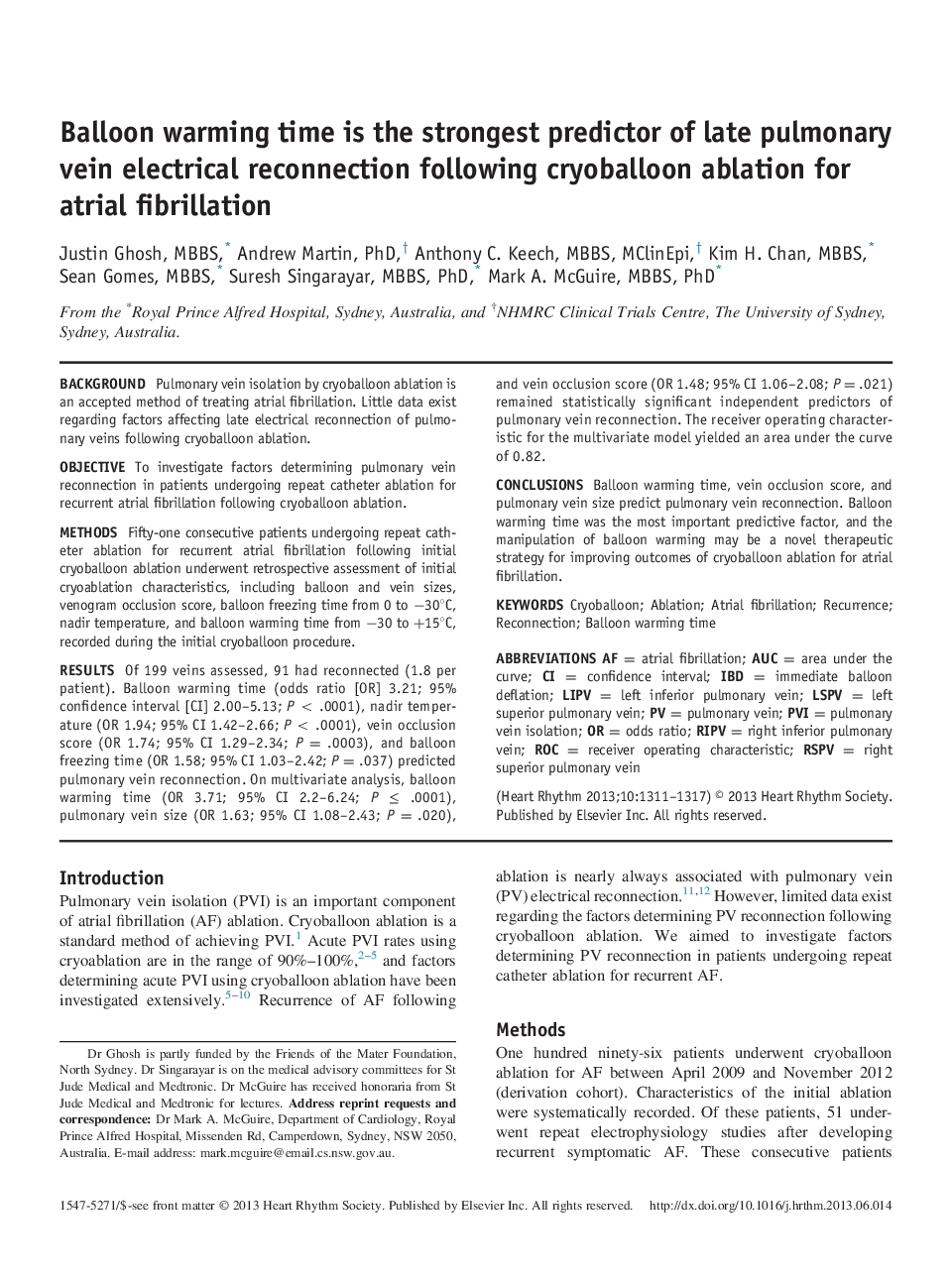| کد مقاله | کد نشریه | سال انتشار | مقاله انگلیسی | نسخه تمام متن |
|---|---|---|---|---|
| 2922186 | 1175836 | 2013 | 7 صفحه PDF | دانلود رایگان |

BackgroundPulmonary vein isolation by cryoballoon ablation is an accepted method of treating atrial fibrillation. Little data exist regarding factors affecting late electrical reconnection of pulmonary veins following cryoballoon ablation.ObjectiveTo investigate factors determining pulmonary vein reconnection in patients undergoing repeat catheter ablation for recurrent atrial fibrillation following cryoballoon ablation.MethodsFifty-one consecutive patients undergoing repeat catheter ablation for recurrent atrial fibrillation following initial cryoballoon ablation underwent retrospective assessment of initial cryoablation characteristics, including balloon and vein sizes, venogram occlusion score, balloon freezing time from 0 to −30°C, nadir temperature, and balloon warming time from −30 to +15°C, recorded during the initial cryoballoon procedure.ResultsOf 199 veins assessed, 91 had reconnected (1.8 per patient). Balloon warming time (odds ratio [OR] 3.21; 95% confidence interval [CI] 2.00–5.13; P < .0001), nadir temperature (OR 1.94; 95% CI 1.42–2.66; P < .0001), vein occlusion score (OR 1.74; 95% CI 1.29–2.34; P = .0003), and balloon freezing time (OR 1.58; 95% CI 1.03–2.42; P = .037) predicted pulmonary vein reconnection. On multivariate analysis, balloon warming time (OR 3.71; 95% CI 2.2–6.24; P ≤ .0001), pulmonary vein size (OR 1.63; 95% CI 1.08–2.43; P = .020), and vein occlusion score (OR 1.48; 95% CI 1.06–2.08; P = .021) remained statistically significant independent predictors of pulmonary vein reconnection. The receiver operating characteristic for the multivariate model yielded an area under the curve of 0.82.ConclusionsBalloon warming time, vein occlusion score, and pulmonary vein size predict pulmonary vein reconnection. Balloon warming time was the most important predictive factor, and the manipulation of balloon warming may be a novel therapeutic strategy for improving outcomes of cryoballoon ablation for atrial fibrillation.
Journal: Heart Rhythm - Volume 10, Issue 9, September 2013, Pages 1311–1317